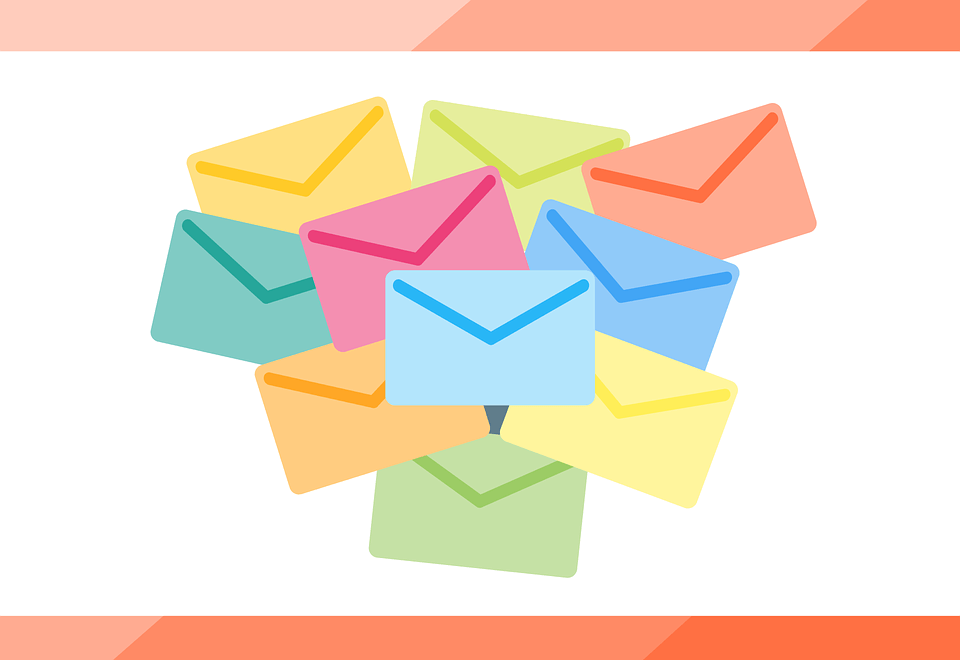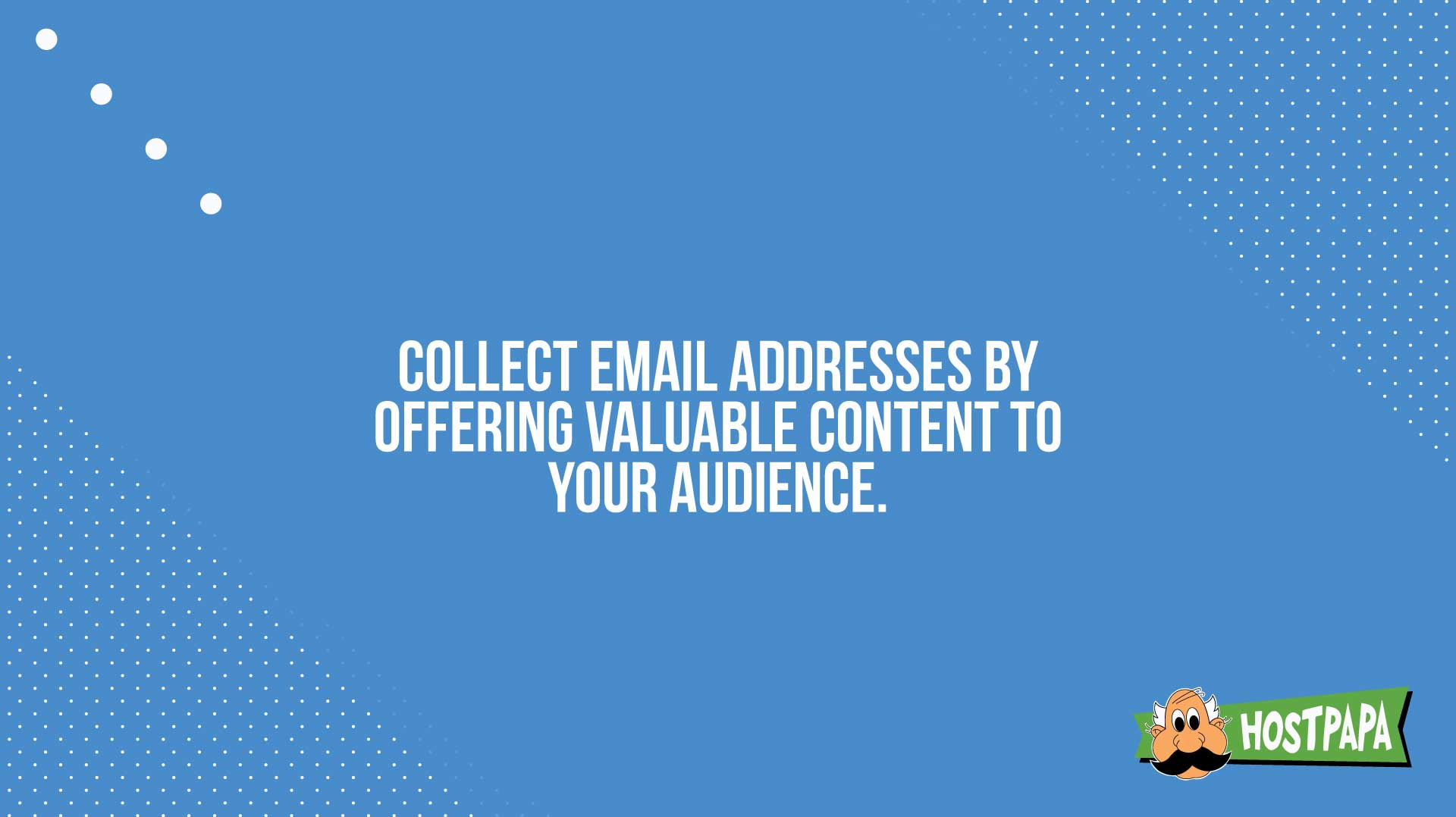If you own a small business, email marketing is one of the most valuable marketing channels available to you, and that’s not going to change any time soon.
Here are some interesting statistics that demonstrate the effectiveness of email marketing:
- Email communication will be used by 4.5 billion people by the year 2024. That’s half of the world’s population!
- 60% of respondents in a small business trends survey said that they purchased based on a promotional email they received.
- $1 spent on email marketing can generate up to $38 in returns! That’s how massive the potential ROI is for email marketing.
- 59% of B2B marketers say that email is their most effective revenue-generating marketing channel.
As impressive as they are, the stats above only tell a part of the story. Reliable information from countless sources points to the enormous potential that effective email marketing campaigns can offer any business. For example, another study shows that mobile email open rates have outgrown desktops sitting at around 62%, so optimizing your artwork for mobile devices is of utmost importance.
Clearly, an investment in email marketing is a must for small business success!
This article is your guide to creating, executing, and monitoring a successful email marketing campaign. We’ll take you through all the steps required to generate revenue from your email campaign.
Let’s get started!
- Understanding Email Marketing
- What Are the 4 Types of Email Marketing?
- Step 1: Defining Your Email Marketing Strategy
- Step 2: Gathering Accurate Email Addresses
- Step 3: Getting People to Open Your Emails
- Step 4: Nailing Your Call to Action
- Step 5: Mastering the Follow-Up Email
- Step 6: Monitoring Your Email Marketing Campaign
Understanding Email Marketing
Email marketing is like the secret handshake of the digital world. When done right, it’s a powerful tool that can help you connect with your audience in a personal and meaningful way. But what exactly is email marketing, and how can you use it to grow your business?
At its core, email marketing is all about building relationships. It’s about creating a communication channel between you and your audience so that you can share your message, your values, and your products or services in a way that resonates with them.
You’ll need an email service provider or an email marketing tool to get started with email marketing. These platforms help you create and send emails, manage your subscriber list, and track your results. Some popular options include Mailchimp, Send in Blue, and Campaign Monitor.
Think about it: when you open your inbox, you’re looking for relevant messages. You want to see updates from your favourite brands, news from your industry and offers that align with your interests. And when you find an email that speaks to you, you’re more likely to engage with it, share it, and take action on it.
That’s why email marketing is so effective. By sending targeted, relevant messages to your subscribers, you can create a sense of connection and trust, increasing engagement, customer loyalty, and sales.
What Are the 4 Types of Email Marketing?
Businesses use four primary types of email marketing to connect with their audience and drive conversions, but before we progress further, we have to make a slight detour and talk about them in more detail.
- Newsletters: These are regular updates businesses send to their email subscribers to keep them updated about company news, promotions, and other relevant information.
- Promotional emails: These emails are specifically designed to promote a product or service and may include discount codes, limited-time offers, or other incentives to encourage purchases.
- Transactional emails: These emails are triggered by a specific action, such as a purchase or account creation, and typically include order confirmations, shipping notifications, and other important information related to the transaction.
- Drip marketing or retention emails: Drip campaigns are a series of automated emails that are sent to subscribers over time. They are designed to nurture leads and guide them through the sales funnel, providing relevant information and offers along the way.
By understanding these four types of email marketing, businesses can tailor their email campaigns to engage their audience better and achieve their marketing goals.
Step 1: Defining Your Email Marketing Strategy
The first thing to do when creating an email marketing campaign is develop a strategy matching your goals. You need to have answers to fundamental questions about your campaign, including:
- Who is your target audience?
- Why is email marketing a good channel to reach them?
- What do you want to offer in your email?
- What results are you expecting from your email campaign, and in what time frame?
- How long will your email marketing campaign run?
- How and when will you send emails to your target audience?
- Which stakeholders in your business need to participate in this campaign?
Answering these questions will give you a lot of clarity on your campaign’s objectives and purpose, and you’ll gain insight into the best way to execute it. Taking a high-level approach, in the beginning, will set the foundation for success, then you can refine your tactics as you get feedback from your audience.
Step 2: Gathering Accurate Email Addresses
Gathering a list of up-to-date email addresses is the most important part of a successful email marketing campaign. Everything else will fall apart if you don’t have the correct information. You can collect the email addresses of your prospects and customers in several ways. The right approach for you depends on who you’re targeting.
The rest of this section covers three good ways to build your email list.
Collecting Email Addresses Through Content Marketing
We believe collecting email addresses by offering valuable content to your audience is the best method. By publishing information of value in an engaging, educational, and entertaining way, you can build an audience of people who will voluntarily share their email addresses.
Content marketing takes time, so you should expect timely results from your potential email subscribers. However, if you consistently offer content that helps your audience, then, over time, you’ll start to build a list of email addresses.
That’s a major step toward email marketing success. You’ll have a list of people who want to hear from you, and that’s worth its weight in gold.
Getting Email Addresses from Public Sources
Once you’ve identified the people you’d like to reach, you can use publicly available information to source their email addresses.
For instance, let’s say you’d like to reach HR managers of technology companies in Singapore, but you only want to target companies with 50 to 200 employees. You can use LinkedIn Sales Navigator to generate a list of leads and prospects. That will let you collect email addresses from their LinkedIn profiles.
Other publicly available sources where you can get email addresses include websites, social media profiles, and public directories. If you employ this tactic, you’ll need to browse these sources to collect the email address required for your campaign.
Researching or Buying Email Addresses
Using a tool like Email Hunter or FindThatLead, you can add an extension to your internet browser that sources email addresses for you. Tools like these use automated, advanced search techniques to return a list of email addresses based on your input.
Here’s a shot of Email Hunter in action:
You can also buy email addresses from data brokers and sellers. If you go this route, be careful to only buy legitimately gathered data, not just scraped off the internet. If you find a reliable data vendor, you should be OK.
Purchasing email data isn’t always effective. People don’t like receiving emails from unknown sources. If you obtain a lead’s email address without their knowledge and then use it to market to them, your emails may be flagged as spam; your email domain could get blacklisted.
For that reason, one of the other approaches we covered is recommended, even though they take more time.
Step 3: Getting People to Open Your Emails
The third step in email marketing is to ensure your emails will be opened. You can boost your email open rates if you pay attention to your subject lines, the sender’s name, and the time the email is delivered. Optimizing these elements is critical if you want good open rates.
The best content for your email subject line will depend on your audience. If you’re targeting C-level executives in Fortune 500 companies, your subject lines should capture the essence of the email in just a few words.
On the other hand, if you’re targeting recreational travellers, a subject line that stimulates a sense of adventure might work better, and that will require more words.
One important thing to avoid is subject lines longer than 70 characters. As time passes, character limits will continue to shrink as people’s attention spans decrease. For example, studies show that subject lines should be no more than 40 characters or 5 words at most. Email marketers call that the dead zone of subject lines. Long subject lines turn people off and lead to lower open rates.
We recommend short, simple subject lines. They make your emails seem less salesy and look normal in a user’s Inbox.
An email campaign sent out by Barack Obama’s fundraising staff proved very successful using one-word subject lines like “Wow” and “Hey.” It just goes to show you simplicity works best!
The sender’s name is the second factor that impacts your email open rates. When deciding on the right sender name for your emails, you can use a corporate name, an individual’s name, or a combination of the two.
If none of those options suit your email marketing campaign, get creative and develop a unique sender name that your audience will like. Choose a recognizable sender name.
Let’s say you work at Nike, and your audience doesn’t know your name. In that case, it would be wise to use Nike, the well-known company name, as the sender name for your email.
However, if your audience knows your name, then using it as the sender’s name is better. You can try out different sender names to see which ones work best for your campaign.
A third thing affecting your email open rates is the time of day your email is delivered. Surprisingly, some statistics say the best time to launch your email marketing campaign is between 8 pm and midnight, as discovered by Experian Marketing Services. Sending emails at this time enhanced their click-through and sales conversion rates.
Nighttime may not be when your target audience checks their emails. The best time to send your emails depends entirely on your audience. They should see your email come in when they’re most likely to open it.
Step 4: Nailing Your Call to Action
One of the last things we’ll cover is the call to action, or CTA, that appears in your email. It is extremely important.
Your CTA must show your audience what you want them to do when they receive your email. If you want them to click a button that takes them to a helpful blog post or article, come right out and tell them that. If you want them to buy something, say so.
The CTA in your email should leave no room for doubt about the action you’re looking for. Links and buttons must be displayed clearly, and you should take extra care to ensure they function correctly.
Here are some tips for creating great CTA buttons to include in your marketing emails:
- Use bright, visually appealing colours. When colours highlight your CTA, it’s more likely that it will be clicked.
Check out the colours used in the CTA button below. The eye-popping combination of a red background with white text makes the button visually appealing and the text very noticeable.
- Keep the CTA button text short. Don’t write a long line for your CTA text. Focus on action words and those that create a sense of urgency.
Take the button pictured above, for example. The words “Reserve” and “Now” are geared toward compelling the audience to take action immediately. Decide whether you want your audience to Book Now, Download Now, or Click Here Now. Whatever you want them to do, your CTA button should say that.
- Send respondents to a relevant landing page. You don’t want your leads’ interest to fizzle out after they click the CTA. If they click on it, they’re interested in your offer.
Your CTA button should navigate to a simple landing page that delivers what you promised in your email. Don’t try to trick your audience – that’s a way you can lose their trust.
Step 5: Mastering the Follow-Up Email
After you’ve compiled your email list, written your compelling copy, designed an eye-catching CTA, and sent your marketing emails – it’s time to sit back and wait for the results.
There are a few ways things can go. Depending on how the recipients react, you may have to send a follow-up email or a few.
Here are the most likely outcomes and some tips on what to do next:
- The recipient opens the email and takes the desired action.
If this happens, congratulations – you’ve achieved your desired outcome!
- The recipient opens the email but takes no action.
In this scenario, send a follow-up email. In it, try reiterating the message you sent the first time or find a new angle to convince the reader to take action. It’s not unusual for businesses to reach out multiple times before a prospect becomes interested.
- The recipient does not open the email.
This outcome requires an automated follow-up email sequence to ensure your prospects open at least one of your emails. Every follow-up email you send should have a different subject line, and try a new tactic to encourage recipients to open it.
In general, sending at least one follow-up email can improve your reply rate from 9% to 13%. Craft a well-written follow-up sequence that runs through your email marketing automation software. That’s how you can optimize your campaign’s ROI and ensure you don’t lose precious leads!
Step 6: Monitoring Your Email Marketing Campaign
Once you’ve been through the process of creating and implementing your email marketing campaign, it’s time to monitor the results.
Using your industry’s benchmarks for email campaigns is a great way to set reasonable expectations for your campaign outcomes. For instance, if you’re in the hospitality industry and sending emails about discounted hotel rates during the off-peak season, you might find a report online showing how similar campaigns have performed for other companies.
The essential metrics to track in an email campaign include:
- Open Rates: Depending on your industry, the open rate for your email campaign should be 15 to 25%. Anything lower may cause concern, and anything higher is a bonus.
- Click-Through Rates: This refers to how many users click the CTA in your email. Like open rates, this metric is closely related to industry benchmarks, and the higher your click-through rate is, the better.
On average, you should expect 4% of recipients who’ve opened your email to click your CTA. Your click-through rates will determine what you need to tweak in your email content.
- Conversion Rates: This refers to the number of prospects who become paying customers, subscribers, or warm leads for your business. With this metric, you should be able to calculate the earnings generated by your email campaign. Quantifying the revenue from your campaigns is very useful for making business decisions.
- Number of Unsubscribes: If you notice a lot of prospects unsubscribing from your emails, you’ll need to change something about those emails. It’s best to stay in touch with your customers continually to stay updated on what interests them. Keeping your subscribers engaged is the key to building a responsive audience.
Email Marketing – A Proven Way to Drive Sales
By having a handle on your email marketing goals and following a creative yet methodical approach to executing your campaign, you can set yourself up for email marketing success.
Test out different emails frequently to determine the contents that work best. If you do that, you’ll eliminate ineffective emails, which will help optimize the ROI of your campaign.
We hope this guide puts you on the right track to creating an effective email marketing campaign. Email marketing is an essential tactic for many small businesses and will continue to be as long as people use email!











